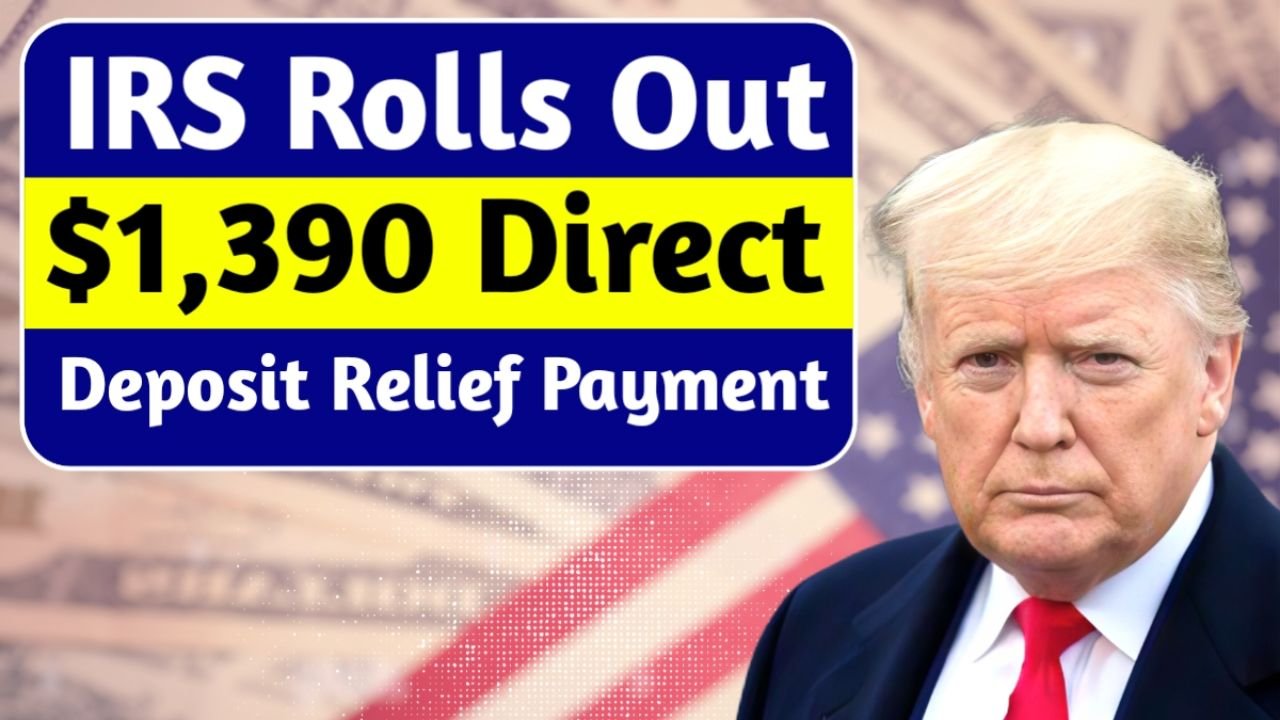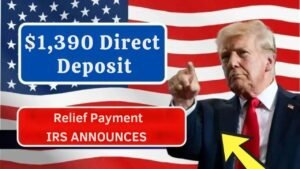Millions of Americans will receive much-needed financial support this November as the IRS begins rolling out the $1,390 Direct Deposit Relief Payment. With inflation continuing to push up the cost of food, rent, utilities, and healthcare, this new direct deposit initiative provides timely assistance to low- and middle-income taxpayers. The IRS will distribute payments automatically using existing tax records, ensuring quick and secure delivery ahead of the holiday season.
The announcement has been welcomed nationwide, offering families a financial cushion during one of the most expensive times of the year. By relying on direct deposits instead of paper checks, the IRS aims to streamline the process and deliver funds to households without delays.
What Is the $1,390 IRS Direct Deposit Relief Payment?
The $1,390 payment is a one-time inflation relief benefit designed to help households manage rising everyday expenses. Unlike broad stimulus checks from previous years, this payment specifically targets Americans hit hardest by price increases.
Key features of the relief payment
- One-time direct deposit
- Does not reduce other federal benefits
- Can be used freely for groceries, rent, bills, or medical needs
- Automatically processed using existing IRS or federal benefit records
Economic experts note that targeted relief programs like this help stabilize consumer spending and support small businesses during economic uncertainty.
Who Is Eligible for the $1,390 IRS Payment?
Eligibility is determined primarily by income level and tax filing status.
Income-based eligibility
- Single filers earning under $75,000 receive the full $1,390
- Married couples earning under $150,000 receive $2,780
- Heads of household receive prorated payments based on qualifying income
- Dependents, Social Security, SSI, and SSDI recipients may also qualify
Individuals who filed their 2024 tax returns and meet the income criteria will be paid automatically—no additional application needed.
Automatic eligibility groups
- Social Security retirees
- SSI and SSDI beneficiaries
- VA benefit recipients
- Low-income workers with valid SSNs
These groups will receive deposits through their existing federal payment systems.
Payment Dates for November 2025
The IRS will issue payments in phases to avoid processing delays.
Expected timeline
- Week 1–2 (Early November): Direct deposits to bank accounts already on file
- Week 2–3: Paper checks for taxpayers without direct deposit
- Week 3–4: Prepaid debit cards for individuals without bank access
Most eligible households are expected to receive their payments by mid-November 2025.
Taxpayers can track their payment using the IRS “Get My Payment” tool, which provides real-time updates on processing and deposit status.
Economic Impact of the $1,390 Relief Program
Economists believe the program will provide a meaningful boost to local economies. When households receive extra cash, they tend to spend it on essential goods and services, which supports small businesses and strengthens community-level economic activity.
How the payment helps the economy
- Boosts retail and grocery spending
- Helps families pay overdue bills
- Reduces reliance on credit cards
- Improves overall consumer confidence
For families struggling with inflation, the $1,390 payment can help bridge financial gaps and offer short-term stability.
Common Issues and How to Avoid Payment Delays
Some recipients may face delays due to incomplete tax filings or outdated personal information.
Quick tips to avoid delays
- Make sure your bank details are updated
- File any pending tax returns
- Update your mailing address if you recently moved
- Check updates only on official IRS websites
The IRS also warns taxpayers to avoid scams. The agency will never call, email, or text asking for bank details or personal information.
FAQS
1. Do I need to apply for the $1,390 IRS payment?
No. Payments are processed automatically for eligible taxpayers.
2. When will the $1,390 payment arrive?
Direct deposits start in early November 2025, with checks and debit cards arriving later in the month.
3. What income limits determine eligibility?
Single filers under $75,000 and married couples under $150,000 receive the full amount.
4. Will this payment affect Social Security or disability benefits?
No. It does not reduce or replace any federal benefits.
5. Is the $1,390 payment taxable?
No. The relief payment is tax-free.
Conclusion
The IRS’s rollout of the $1,390 Direct Deposit Relief Payment offers valuable financial support at a critical time for millions of Americans. With automatic processing, fast delivery, and broad eligibility, this program will help families manage essential expenses while supporting economic stability across the country.
To ensure timely payment, taxpayers should keep their information updated and rely only on official IRS sources for updates. This relief effort represents a crucial step toward easing financial pressure and strengthening household stability nationwide.





